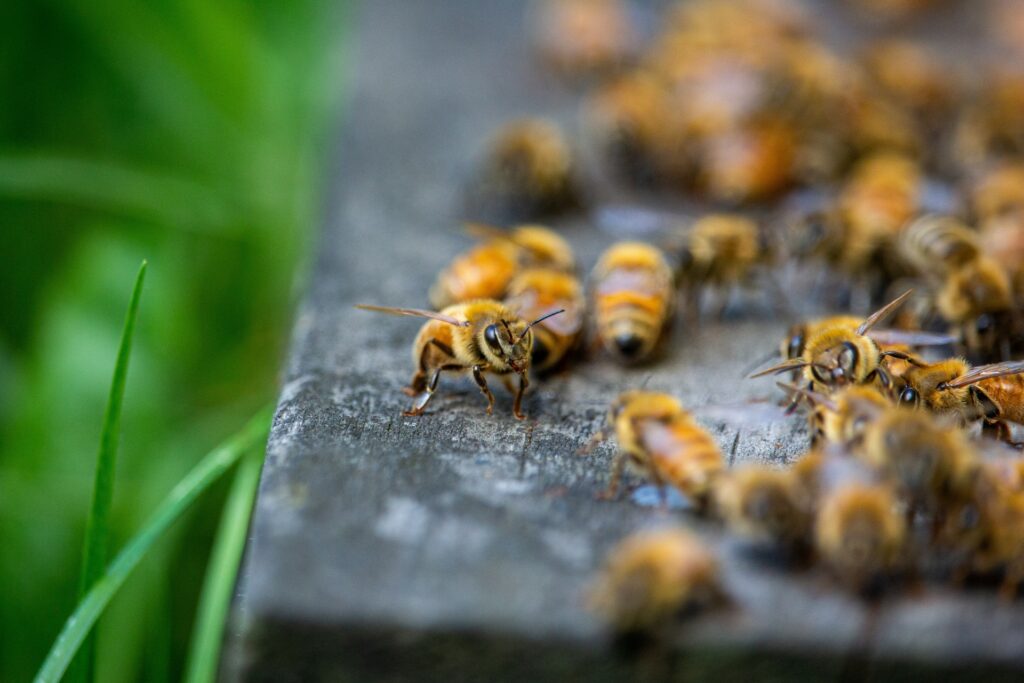The Cycle of Bee Colony Life

Everything seems purposefully cyclical in our world, and how bee colonies behave year after year should be no surprise. If you are not a beekeeper yourself, the mystery of bees can be intriguing, and even beekeepers enjoy the continued unfolding of new findings about these fascinating pollinators. Honeybee colonies can consist of groups in the tens of thousands, with one queen bee and hundreds of drone bees. It is easy to see how the cycle of BEEhavior allows things to keep moving without falling into chaos. Order must be maintained in a crowded hive, and roles must be kept distinct. The queen’s sole job is to lay eggs, while the other bees adhere to their specific roles to ensure the hive’s survival.
Seasonal Behavior is a Natural Part of the Cycle
The bee activity calendar doesn’t follow our traditional calendar, as September often marks the beginning of a new bee cycle for colonies of honeybees. As expected, the state of the hive at the start of a new year can affect how well it will do in the upcoming year. Beekeepers have a critical role in ensuring a hive’s health year-round but being attentive to hive health before September can provide a greater platform for success. Colonies with substantial honey and pollen in the fall allow the queen to begin laying eggs at the end of the year to replace bees that died in the winter. Hives without enough to feed the queen early must wait until spring to get pollen from blooming flowers which can affect the overall population growth.
Fall Bee Behavior
In our fall, which is late September to late December, there is a significant reduction of food coming into the hive, which diminishes the population. Younger bees will survive the winter, and older bees will likely perish. The substance, propolis, is used as a seal to minimize the amount of cold air that enters the hive. If there is a shortage of food in the winter, drone bees are sacrificed and sent out from the hive, where they will not be able to survive the winter. However, this sacrifice is necessary to have enough food for the rest of the hive. The queen bee and young bees are the priority.
Bees Create Heat in Clusters
When temperatures drop below a certain degree, bees get together in clusters to stay warm. Bees are motionless and put all their energy into raising temperatures in these clusters, which is critical so the eggs, larvae, and pupae can survive. The incredible adaptability of these clusters to temperature is astonishing. Bee clusters contract and expand to adjust to the temperatures, and in spurts of warmer temperatures, the entire group moves to a new area within the hive with honey to use for food. In extended spells of cold weather, bees may perish from an inability to move to another location.
In the middle of fall, the queen bee doesn’t lay eggs, and winter can be the most challenging time for hives to survive. In warmer climates, where temperatures do not get below 57 degrees, queen activity rarely stops at all.
Spring Flowers and Cyclical Behavior
Longer spring days mean new food sources for our buzzing pollinators. Bees welcome the accessibility to water which helps regulate temperature and honey consistency. As spring continues, colony populations increase quickly as young bees grow. In this busy time of hive life, excess honey and pollen may collect in the hive. Rising temperatures increase drone activity and swarming activity as the hive gets overcrowded. Bees don’t leave the hive but instead cluster outside the hive and try to expand the number of combs if there is enough room. Sometimes, beekeepers need to monitor this and provide more space in hives by adding boxes. It is essential hives have enough room to store honey and pollen.
Swarming is Part of the Bee Cycle
Part of the incredible bee cycle is swarming, which can be scary if you do not know what is happening. In warmer times, the queen and half the bees rush out of the hive and find a tree branch to settle on while a new home is located. The bees will cluster around the queen until the scouts determine a new location, and then the cluster breaks up as the bees head to their new home. Quickly, bees adapt to their new site and build combs. Swarming typically occurs between March and June (the Warmest months) but can be expected anytime between April and October.
Rivaling queens will fight until only one queen remains, and she returns to the hive as the new queen. Within a week, the new queen has mated and is laying eggs.
Summer is Beehive Peak
In the early summer, colonies are at maximum capacity as they seek nectar and pollen storage for the upcoming colder months. Summer is the time to store up, and when it is most opportune for skilled beekeepers to remove honey when there is ample supply for the bee colony’s survival. If you are a beekeeper and have yet to harvest honey, speak with a local beekeeper for tips. If you are not a beekeeper, find a local honey supplier you can support!
